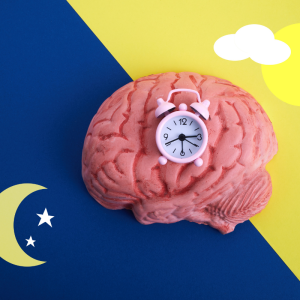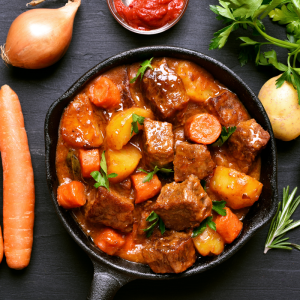 I’ve been feeling rather slow these days. It seems to happen every year around this time. I generally dismiss it as a mild case of the “winter blues”, as I’m more of a summer person. But I’ve noticed my energy level is not as high as usual and I’ve been feeling hungrier than I normally do.
I’ve been feeling rather slow these days. It seems to happen every year around this time. I generally dismiss it as a mild case of the “winter blues”, as I’m more of a summer person. But I’ve noticed my energy level is not as high as usual and I’ve been feeling hungrier than I normally do.
Rather than trying to fight it and plod on, however, I’ve decided to “go with the slow”. Because that is exactly what we are intended to do as we transition through fall and winter. And it has to do with our circadian and seasonal rhythms.
I’ve got (circadian) rhythm
Circadian rhythms are (nearly) 24-hour cycles that are part of our body’s internal clock. They run in the background to carry out essential functions and processes (kind of like a computer’s operating system). The sleep-wake cycle is the one most people think of. And it is the one that most obviously identifies the connection between the circadian rhythm and the cues of light. We go to sleep when it is dark and wake up when it is light. Or at least that’s what we do when not left to our devices, like artificial lights, computers, mobile phones, tablets, e-readers, televisions, alarm clocks and so on.
At this time of year, the days are shorter and we are exposed to less natural light. Being exposed to fewer hours of sunlight, the pineal gland in the brain produces more melatonin, which makes us sleepy. Before the advent of artificial light, we got more sleep in the winter. After all, one couldn’t get much done in the dark anyway. But now we can keep the lights on late into the night. As a result, we don’t experience the same seasonal adjustment to greater sleep and recovery time in the winter.
To everything there is a season
 But it isn’t just about the sleep-wake cycle. Did you know that almost every organ, tissue and even cell in your body contains biological clocks? This means that each organ and system has its own time for peak performance and time when it is meant to slow down, rest and rejuvenate. All body clocks are synchronized with a master clock in your brain, which is influenced by environmental cues including exercise, social activity, temperature and, most important, light.
But it isn’t just about the sleep-wake cycle. Did you know that almost every organ, tissue and even cell in your body contains biological clocks? This means that each organ and system has its own time for peak performance and time when it is meant to slow down, rest and rejuvenate. All body clocks are synchronized with a master clock in your brain, which is influenced by environmental cues including exercise, social activity, temperature and, most important, light.
They work together to give us daily rhythms for sleep, metabolism, mood and even our gut microbiome. These clocks are actually encoded in our DNA. They are so fundamental to life that if we were to move to another planet with identical conditions to Earth but a day-night cycle other than 24 hours, we would not easily survive.
When we eat is as important as what we eat
Your digestive system is no exception. Research in this area by The Salk Institute (and others) is revealing that when we eat is as important as what we eat. Metabolism – including the physical motion of our digestive system and the release of enzymes and hormones in response to food intake – works best when we confine eating to an 8-to-12-hour window, starting in the early morning and ending in the early evening (relative to sunrise and sunset).
For example, in response to the first food and light of morning, insulin sensitivity increases and melatonin decreases, increasing energy and making you feel more alert. Whereas, come evening, melatonin levels go up and insulin sensitivity decreases, preparing you body for rest and cell repair.
And many gastric juices, enzymes and other hormones required for proper digestion are released in the first half of the day with this activity waning as day progresses in night. Which is why eating late at night can cause indigestion. And indigestion makes it more difficult for you to sleep well.
This has a knock-on effect as sleep also affects hormones in your body that regulate hunger: ghrelin which stimulates your appetite and leptin, your satiety hormone. When you get less sleep than you need, it leads to an imbalance of too much ghrelin relative to leptin. And it explains why you often feel hungrier when you haven’t had enough sleep (not to mention, if you are awake and moving around more hours of the day, your caloric requirement will be greater).
Winter weight
 Another reason for greater hunger in winter is that when the outside temperature drops, your body requires more energy just to keep its core temperature where it should be. And the body wants to prepare itself for winter by adding a little protective, insulating fat. So we crave more food but also more calorically dense foods. The winter diet is rich with these. Starchy root vegetables, proteins and fats predominate a local, seasonal diet as many leafy greens and fruits could not be grown at this time of year by those living in northern climates.
Another reason for greater hunger in winter is that when the outside temperature drops, your body requires more energy just to keep its core temperature where it should be. And the body wants to prepare itself for winter by adding a little protective, insulating fat. So we crave more food but also more calorically dense foods. The winter diet is rich with these. Starchy root vegetables, proteins and fats predominate a local, seasonal diet as many leafy greens and fruits could not be grown at this time of year by those living in northern climates.
Eating both seasonally and in alignment with your circadian rhythm is critical to good health. Experts suggest that by doing so you can more easily lose weight and reduce your risk of chronic disease like type 2 diabetes, cardiovascular disease and more.
Ideally, aim to eat during daylight hours, which means a shorter eating window in winter, but certainly within a window of 12 hours. It is best to make breakfast and lunch your larger meals and dinner your smaller meal of the day.
Go with the slow
Above all, listen to your body. And realize it is quite natural to crave more sleep and higher calorie “comfort” foods right now. Rather than fight it, I’ve decided to “go with the slow” and get the rest and recovery that this time of year is meant to provide.
And if, like me, you are craving starchier carbs, go for it (without going overboard). I’m talking unrefined, whole foods like legumes, whole grains and starchy veg, not a pizza and cake binge. Hearty, warming, starchy, protein-rich soups, stews and casseroles drizzled with a little quality olive oil are mainstays for this time of year. Stay tuned later this month for my Slowvember Slow Food Menu of slow-cooked winter favourites.
Slow down when eating
Speaking of slow, it’s important to slow down to eat as well. When we are stressed and rushing about, our body’s sympathetic nervous system is engaged as we perceive we are under threat. Regardless of whether this perceived threat is physical or psychological, this system triggers our fight-or-flight response, preparing us to either stay and deal with the situation or to run to safety. It is our survival response.
Needless to say, if one is fighting or running for one’s life, using energy to digest food is not a top priority. Our ancestors that survived to carry on their lines did so because they successfully avoided becoming a predator’s meal, rather than using precious energy to digest their own last meal. The calories you burn digesting your food account for 5 to 15 percent of your energy expenditure. But when you are calm and relaxed, your parasympathetic system takes over. This is also known as the rest and digest mode. And this is the mode you want to be in when you sit down to eat.
Keep calm and chew on
So before you start your meal, take a few minutes to breathe deeply and slowly in and out from your abdomen. This will relax you and switch your body into parasympathetic mode so your digestion will be at its best.
And taking the time to chew your food thoroughly is critical to healthy digestion as well. Why?
- amylase in your saliva will begin the breakdown of carbohydrates,
- this “sampling” of food as you chew will send signals about the content of your meal to your brain so it, in turn, signals your digestive system to release the appropriate amounts of the various enzymes (the amylases, proteases and lipases that break down carbohydrates, protein and fats, respectively) and other secretions required to properly digest your food, and
- mechanically breaking down the food in this way provides a greater surface area for all these gastric juices and enzymes to do their work most thoroughly.
When you eat slowly you maximize the amount of nutrition you derive from your food. You also maximize your enjoyment. Eating slowly releases more flavour in your food and increases the time it lingers among your taste buds. This boosts feelings of fullness and satisfaction. As a result, you are also less likely to overeat.
So take your time this fall and winter. Go with the slow, rest and rejuvenate.
Interested in reading more about how light affects us and/or would like to get a head start on winterizing the veggie content of your meals? Hearken back to my October 2019 Dishing It Up Post for links to two excellent resource books on these subjects.